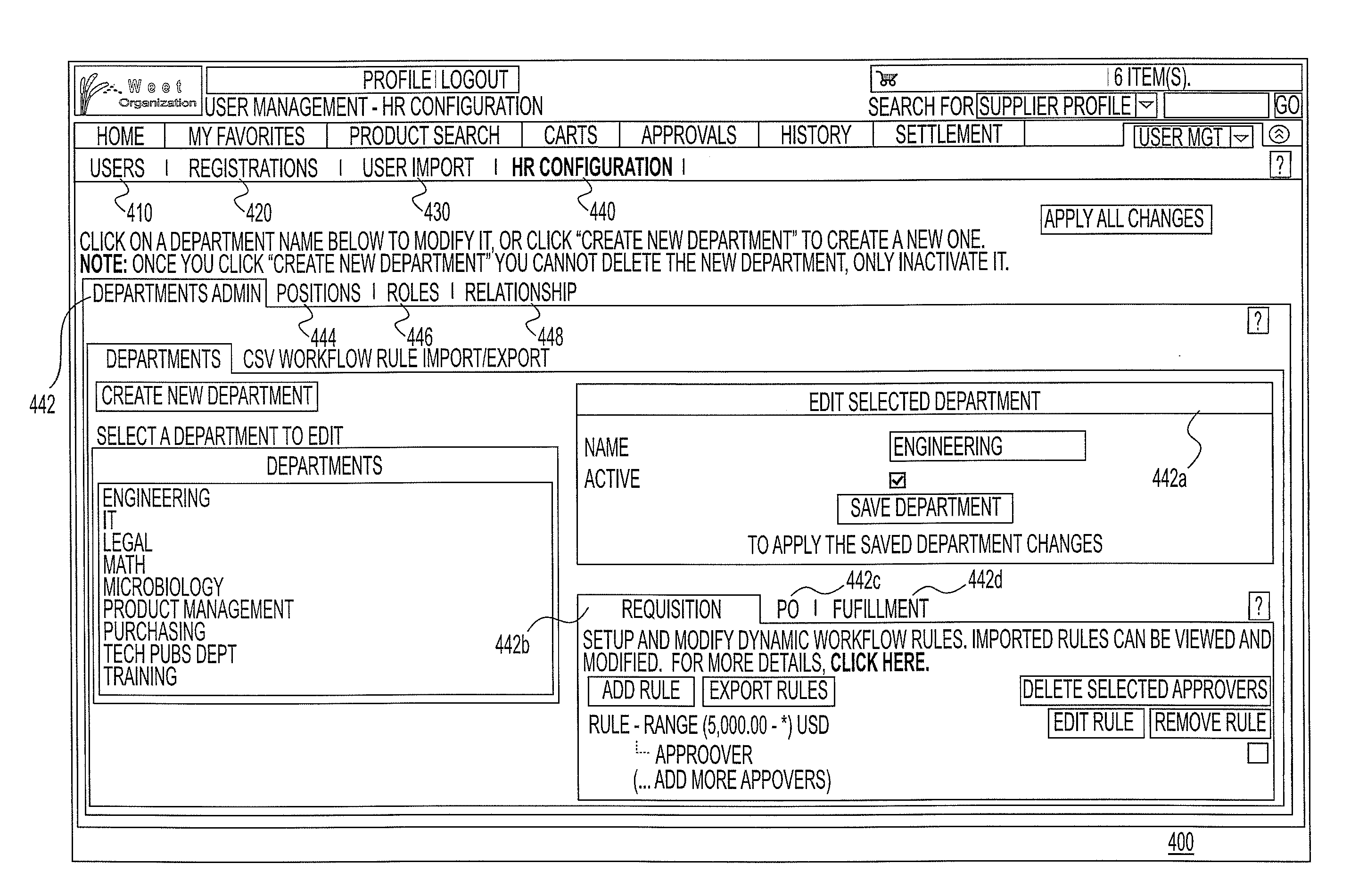Taxonomy and Data Structure for an Electronic Procurement System
a technology of electronic procurement and taxonomy, applied in the field of procurement, can solve the problems of affecting the efficiency of the procurement process, so as to achieve the effect of simple and complex business terms, easy customization, and efficient and simple procurement process
- Summary
- Abstract
- Description
- Claims
- Application Information
AI Technical Summary
Benefits of technology
Problems solved by technology
Method used
Image
Examples
Embodiment Construction
[0087]Reference will now be made in detail to embodiments, examples of which are illustrated in the accompanying drawings. In the following detailed description, numerous non-limiting specific details are set forth in order to assist in understanding the subject matter presented herein. It will be apparent, however, to one of ordinary skill in the art that various alternatives may be used without departing from the scope of the present invention and the subject matter may be practiced without these specific details. For example, it will be apparent to one of ordinary skill in the art that the subject matter presented herein can be implemented on any type of client-server compatible system containing any type of client, network, server, and database elements.
[0088]The terms module, engine, and application are used interchangeably herein.
[0089]FIG. 1 is a block diagram illustrating an exemplary embodiment of an eProcurement system in accordance with the present invention. The term “eP...
PUM
 Login to View More
Login to View More Abstract
Description
Claims
Application Information
 Login to View More
Login to View More - R&D
- Intellectual Property
- Life Sciences
- Materials
- Tech Scout
- Unparalleled Data Quality
- Higher Quality Content
- 60% Fewer Hallucinations
Browse by: Latest US Patents, China's latest patents, Technical Efficacy Thesaurus, Application Domain, Technology Topic, Popular Technical Reports.
© 2025 PatSnap. All rights reserved.Legal|Privacy policy|Modern Slavery Act Transparency Statement|Sitemap|About US| Contact US: help@patsnap.com



